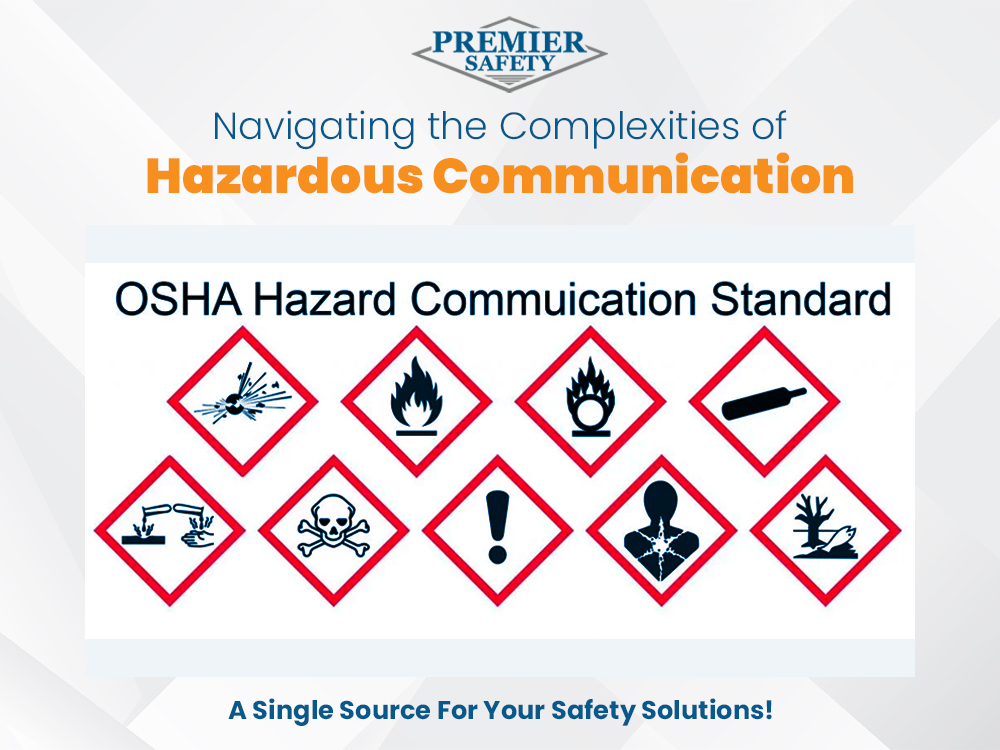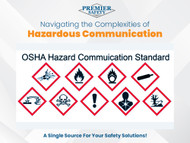Navigating the Complexities of Hazardous Communication
Posted by Michael Womack - Premier Safety on Feb 19th 2024

In the ever-evolving landscape of workplace safety, staying informed about Hazardous Communication is crucial. This guide explains OSHA's new rules, helping you understand how to keep your workplace safe and follow the law.
Mastering Hazard Communication: The Key to a Safer Workplace
understand and avoid chemical hazards at work. Like a guiding light in the maze of regulations.
As we navigate through 2023, understanding and implementing effective Hazardous Communication practices are more crucial than ever. As rules change and work settings get more complicated, it's crucial to understand Hazardous Communication standards. Not just helpful, it's necessary.
What OSHA Expects from Hazard Communication
OSHA's requirement ensures that companies classify chemicals for hazards. Employers and employees then share information about these hazards. This transmission takes the form of labels on containers, safety data sheets (SDSs), and employee training.
The Standard
In 2024, the standard is still evolving to reflect new science and workplace trends.
It aims to improve workplace safety by enhancing the communication of chemical hazards, thus making the Standard more effective.
The Quintessential Five: Elements of the OSHA Hazard Communication Standard
1. Hazard Classification: A thorough examination aimed at identifying the chemical substances' health and physical risks.
2. Labels: Hazardous chemical containers need a label with a warning word, pictures, hazard descriptions, and safety advice.
3. Safety Data Sheets (SDS): A detailed document providing comprehensive information about a chemical substance or mixture.
4. Employee Training: Ensuring that employees understand the hazards and can follow appropriate protective measures.
5. Written Hazard Communication Program: A document that outlines the implementation of standards in the workplace.
Decoding Hazard Communication 29 CFR 1910 1200
This part of the Federal Regulations sets up Hazardous Communication. This rule informs workers about potential chemical hazards in their workplace. This blueprint directs the creation, sharing, and use of information about chemical hazards.
Why This Matters
Understanding and using Hazardous Communication rules helps follow the law and makes the workplace safer and more informed. It ensures every worker, from entry-level to top bosses, knows how to avoid danger and protect each other.
In the realm of Hazardous Communication, knowledge truly is power. As we move through 2024, let's aim to do more than just meet the rules. Let's make our workplaces extremely safe and healthy places.
Wrapping Up
The journey through Hazardous Communication is ongoing and ever-evolving. Let's focus on staying safe, learning, and improving ourselves while following the rules and going the extra mile. After all, a well-informed workforce is the cornerstone of a safe, productive, and thriving workplace.
FAQs
Q: How often do Hazard Communication Standards get updated?
A: OSHA reviews and updates the standards as needed to reflect new scientific data, technology, and workplace practices. Staying informed about the latest updates is crucial.
Q: Can we conduct Hazardous Communication training online?
A: Yes, Online training can effectively contribute to a Hazardous Communication program if it includes all required elements and is easy for employees to understand.
For more insights and updates on workplace safety and compliance, visit: https://www.osha.gov/laws-regs/regulations/standardnumber/1910/1910.1200 and https://www.osha.gov/hazcom. Here's to a safer workplace for all!

